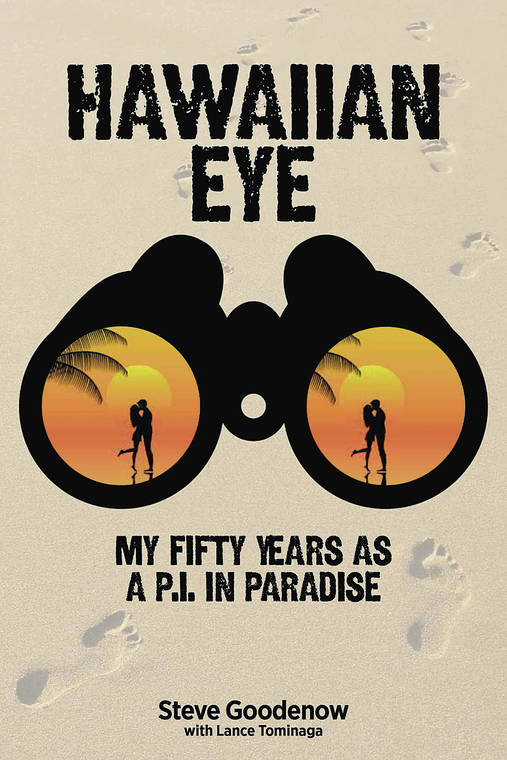Hawaii has been the beat of memorable detectives ever since Earl Derr Biggers introduced quiet but effective Honolulu police detective Charlie Chan in 1925 — Chan’s investigations continued through six books and then in a series of popular films and radio shows through the 1940s.
In 1959, Warner Bros. Television introduced private detectives Tracy Steele and Tom Lopaka, played by Anthony Eisley and Robert Conrad respectively, who operated out of what was then Kaiser’s Hawaiian Village, in its prime-time television show “Hawaiian Eye.” Jack Lord originated the iconic character of Steve McGarrett on “Hawaii Five-0” in 1968, and Tom Selleck debuted as high-profile private investigator Thomas Magnum on “Magnum, P.I.” in 1980 — CBS rebooted McGarrett in 2010 and Magnum in 2018.
From Chan to Magnum, they were fictional characters solving crimes in their creators’ fictional versions of Hawaii. Steve Goodenow is the real thing.
A Hawaii resident since the 1960s, and real-life private investigator and security consultant, Goodenow shares a half-century of his career highlight cases in “Hawaiian Eye: My Fifty Years as a P.I. in Paradise” (Watermark Publishing, $18.95 with free shipping during the COVID-19 lockdown; bookshawaii.net). Written with an assist from veteran biographer Lance Tominaga, Goodenow’s memoir is especially interesting for people who were living here when these cases were going down.
Many of the cases are presented as one of the “seven deadly sins.” Goodenow recalls the high times and dramatic fall of Ronald Rewald in the 1980s; reveals the probable reason that a group of corrupt city employees were not prosecuted after they were shown to have protected certain “hostess bars” several years later; describes the challenge of brokering agreements between hostile factions within the University of Hawaii; and details the circumstances under which he was accused of fabricating defamatory information about a local political figure. (All parties involved eventually agreed that the accusations were groundless.)
Not all cases turn out well. Sometimes missing people aren’t found, sometimes justice does not prevail. Goodenow includes some of those cases too.
He also shares his impressions of Sen. Daniel Inouye, Big Island rancher Larry Mehau, Tom Selleck, Cecil “Cec” Heftel and Hari Kojima. He also includes some people whose names aren’t headline material these days but who were big names back when.
Goodenow and Tominaga also fold his biography into the narrative: Goodenow’s father was an FBI agent who chose Hawaii as his final posting prior to retirement. Goodenow had just graduated from high school when his father was posted here; he went to college here and on the mainland, worked as a truck loader, earned a degree in education and taught school on the mainland.
In 1967 Goodenow returned to Hawaii intending to be a public school teacher. His father had started a private detective agency and asked him to help on a surveillance case. The circumstances that convinced Goodenow he’d rather be a private detective than a teacher make for another memorable story.
Also memorable are Goodenow’s insights into the profession. He reveals some of the personality traits that made him a successful investigator. He emphasizes that the life of a professional private investigator is far less glamorous than is portrayed on “Magnum, P.I.” and elsewhere. He explains how and why a private eye can operate outside the rules and regulations that restrict legal investigations by law enforcement agency. Regarding that last point, Goodenow also explains how far he’ll go — and where he won’t — on behalf of a client.

